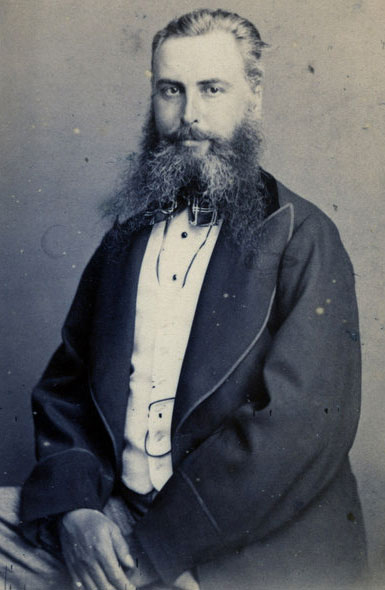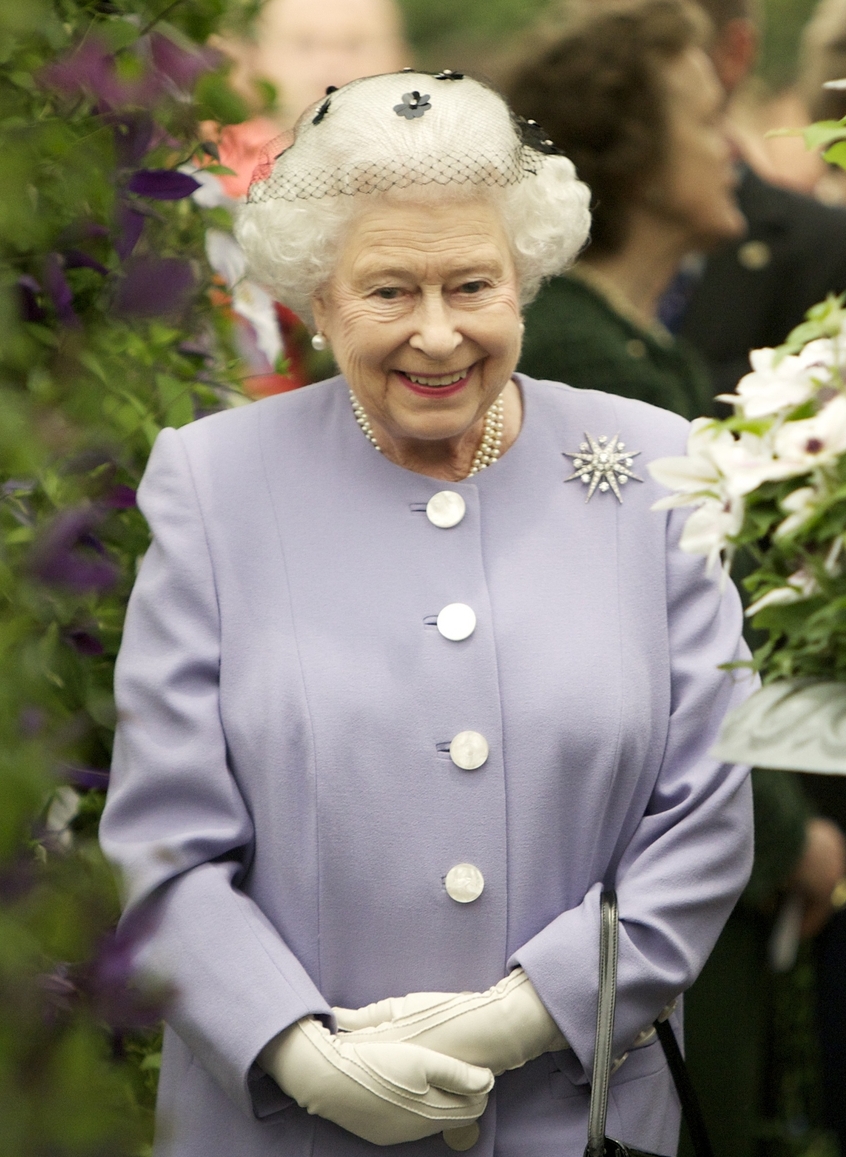|
Royal Sovereign Strawberry
The Royal Sovereign is a strawberry cultivar. It is one of the oldest varieties still widely grown. History The cultivar was created by Thomas Laxton in Tinwell, near Stamford, Lincolnshire, in 1892. Throughout the 19th Century, botanists had been trying to create larger, sweeter varieties of strawberries. Laxton's 'Royal Sovereign' was one of the most successful, combining European flavour with American robustness. 'Royal Sovereign' was at the pinnacle of its popularity between the 1920s and the 1960s. Elizabeth II of the UK was served the variety at her coronation banquet. In the latter 20th Century, older strawberry cultivars fell out of favour commercially, displaced by modern varieties with longer shelf-lives, higher fruit yields and a better resistance to modern methods of transportation. Despite this, the variety is still highly prized amongst strawberry aficionados, and is still grown in small-scale cultivation, where flavour can take more precedence over yield quantity. ... [...More Info...] [...Related Items...] OR: [Wikipedia] [Google] [Baidu] |
Fragaria Ananassa
The garden strawberry (or simply strawberry; ''Fragaria × ananassa'') is a widely grown hybrid species of the genus ''Fragaria'', collectively known as the strawberries, which are cultivated worldwide for their fruit. The fruit is widely appreciated for its characteristic aroma, bright red color, juicy texture, and sweetness. It is consumed in large quantities, either fresh or in such prepared foods as jam, juice, pies, ice cream, milkshakes, and chocolates. Artificial strawberry flavorings and aromas are also widely used in products such as candy, soap, lip gloss, perfume, and many others. The garden strawberry was first bred in Brittany, France, in the 1750s via a cross of ''Fragaria virginiana'' from eastern North America and ''Fragaria chiloensis'', which was brought from Chile by Amédée-François Frézier in 1714. Cultivars of ''Fragaria'' × ''ananassa'' have replaced, in commercial production, the woodland strawberry (''Fragaria vesca''), which was the first strawbe ... [...More Info...] [...Related Items...] OR: [Wikipedia] [Google] [Baidu] |
Tinwell
Tinwell is a village and civil parish in the county of Rutland in the East Midlands of England. The population at the 2001 census was 209, increasing to 234 at the 2011 census. Village The village's name origin is dubious. Possibly, 'spring/stream of the people of Tyni'. Alternatively, 'spring/stream of Tida' or 'spring/stream with goats'. The village is just west of the A1 and within walking distance of the town of Stamford in Lincolnshire. The village has a well-used village hall, which provides a venue for parties and community events as well as regular special interest classes. Next door to the village hall is a football pitch which as well as providing a sports area is the venue for village parties. A recent major event on the field was the Queen's Diamond Jubilee in 2012 where hundreds of villagers and friends turned out for a sports day, barbeque and concert and the lighting of the jubilee beacon made at Tinwell Forge. Also nearby on Crown Lane is the village pub "The ... [...More Info...] [...Related Items...] OR: [Wikipedia] [Google] [Baidu] |
Strawberry
The garden strawberry (or simply strawberry; ''Fragaria × ananassa'') is a widely grown hybrid species of the genus '' Fragaria'', collectively known as the strawberries, which are cultivated worldwide for their fruit. The fruit is widely appreciated for its characteristic aroma, bright red color, juicy texture, and sweetness. It is consumed in large quantities, either fresh or in such prepared foods as jam, juice, pies, ice cream, milkshakes, and chocolates. Artificial strawberry flavorings and aromas are also widely used in products such as candy, soap, lip gloss, perfume, and many others. The garden strawberry was first bred in Brittany, France, in the 1750s via a cross of ''Fragaria virginiana'' from eastern North America and ''Fragaria chiloensis'', which was brought from Chile by Amédée-François Frézier in 1714. Cultivars of ''Fragaria'' × ''ananassa'' have replaced, in commercial production, the woodland strawberry ('' Fragaria vesca''), which was the first straw ... [...More Info...] [...Related Items...] OR: [Wikipedia] [Google] [Baidu] |
Thomas Laxton
Thomas Laxton (1830 – 6 August 1893) was a plant breeder and a correspondent of Charles Darwin, best known for his hybridisation of peas. Thomas Laxton was born in the village of Tinwell, Rutland in 1830. He practised as a solicitor in Stamford before his interest in horticulture led him to become an authority on plant hybridisation. By 1858 Laxton was breeding plants. Initially he worked from St Mary's Hill, Stamford and corresponded with Charles Darwin from this address. Early correspondence with Darwin referred to Laxton's work on hybridising peas. Laxton applied scientific methods to plant breeding, making careful observations of parent plants. He recognised the susceptibility of plants to disease and resistance of these diseases by their American counterparts. Laxton made observations on gooseberries and Darwin corresponded with him during the 1860s and 1870s on his work. He is probably widely remembered for his contribution to strawberry breeding. In 1872 he began to ... [...More Info...] [...Related Items...] OR: [Wikipedia] [Google] [Baidu] |
Stamford, Lincolnshire
Stamford is a town and civil parish in the South Kesteven District of Lincolnshire, England. The population at the 2011 census was 19,701 and estimated at 20,645 in 2019. The town has 17th- and 18th-century stone buildings, older timber-framed buildings and five medieval parish churches. It is a frequent film location. In 2013 it was rated a top place to live in a survey by ''The Sunday Times''. Its name has been passed on to Stamford, Connecticut, founded in 1641. History Roman and Medieval Stamford The Romans built Ermine Street across what is now Burghley Park and forded the River Welland to the west of Stamford, eventually reaching Lincoln. They also built a town to the north at Great Casterton on the River Gwash. In 61 CE Boudica followed the Roman legion Legio IX Hispana across the river. The Anglo-Saxons later chose Stamford as the main town, being on a larger river than the Gwash. The place-name Stamford is first attested in the Anglo-Saxon Chronicle, where it appears ... [...More Info...] [...Related Items...] OR: [Wikipedia] [Google] [Baidu] |
Elizabeth II
Elizabeth II (Elizabeth Alexandra Mary; 21 April 1926 – 8 September 2022) was Queen of the United Kingdom and other Commonwealth realms from 6 February 1952 until her death in 2022. She was queen regnant of 32 sovereign states during her lifetime, and was head of state of 15 realms at the time of her death. Her reign of 70 years and 214 days was the longest of any British monarch and the longest verified reign of any female monarch in history. Elizabeth was born in Mayfair, London, as the first child of the Duke and Duchess of York (later King George VI and Queen Elizabeth The Queen Mother). Her father acceded to the throne in 1936 upon the abdication of his brother Edward VIII, making the ten-year-old Princess Elizabeth the heir presumptive. She was educated privately at home and began to undertake public duties during the Second World War, serving in the Auxiliary Territorial Service. In November 1947, she married Philip Mountbatten, a former prince ... [...More Info...] [...Related Items...] OR: [Wikipedia] [Google] [Baidu] |
Coronation Of Elizabeth II
The coronation of Elizabeth II took place on 2 June 1953 at Westminster Abbey in London. She acceded to the throne at the age of 25 upon the death of her father, George VI, on 6 February 1952, being proclaimed queen by her privy and executive councils shortly afterwards. The coronation was held more than one year later because of the tradition of allowing an appropriate length of time to pass after a monarch dies before holding such festivals. It also gave the planning committees adequate time to make preparations for the ceremony. During the service, Elizabeth took an oath, was anointed with holy oil, was invested with robes and regalia, and was crowned Queen of the United Kingdom, Canada, Australia, New Zealand, South Africa, Pakistan, and Ceylon (now Sri Lanka). Celebrations took place across the Commonwealth realms and a commemorative medal was issued. It has been the only British coronation to be fully televised; television cameras had not been allowed inside the abbey ... [...More Info...] [...Related Items...] OR: [Wikipedia] [Google] [Baidu] |
Soft Fruit
A berry is a small, pulpy, and often edible fruit. Typically, berries are juicy, rounded, brightly colored, sweet, sour or tart, and do not have a stone or pit, although many pips or seeds may be present. Common examples are strawberries, raspberries, blueberries, blackberries, red currants, white currants and blackcurrants. In Britain, soft fruit is a horticultural term for such fruits. In common usage, the term "berry" differs from the scientific or botanical definition of a fruit produced from the ovary of a single flower in which the outer layer of the ovary wall develops into an edible fleshy portion (pericarp). The botanical definition includes many fruits that are not commonly known or referred to as berries, such as grapes, tomatoes, cucumbers, eggplants, bananas, and chili peppers. Fruits commonly considered berries but excluded by the botanical definition include strawberries, raspberries, and blackberries, which are aggregate fruits and mulberries, which ar ... [...More Info...] [...Related Items...] OR: [Wikipedia] [Google] [Baidu] |
Beatrix Havergal
Beatrix is a Latin feminine given name, most likely derived from ''Viatrix'', a feminine form of the Late Latin name ''Viator'' which meant "voyager, traveller" and later influenced in spelling by association with the Latin word ''beatus'' or "blessed". It is pronounced in British English and the same or in North American English. Another North American English pronunciation however approximates that of most other languages: , as shown by US dictionary entries for the former queen of the Netherlands. Common forms of this name include '' Beatrice'' in English and Italian, '' Béatrice'' in French, ''Beatriz'' in Spanish and Portuguese, ''Beate'' in German, and '' Beata'' in Polish and Swedish. Common short forms are '' Bea'' and '' Trixie''. See Beatrice (given name) for other derivatives. People Saints * Saint Beatrix (died ca. 303), Christian martyr, in older sources named Viatrix ("the traveler"). * Saint Beatrix d'Este (1226?-1262), Italian Benedictine nun, niece of ... [...More Info...] [...Related Items...] OR: [Wikipedia] [Google] [Baidu] |
Chelsea Flower Show
The RHS Chelsea Flower Show, formally known as the ''Great Spring Show'',Phil Clayton, ''The Great Temple Show'' in ''The Garden'' 2008, p.452, The Royal Horticultural Society is a garden show held for five days in May by the Royal Horticultural Society (RHS) in the grounds of the Royal Hospital Chelsea in Chelsea, London. Held at Chelsea since 1912, the show is attended by members of the British Royal Family. Highlights to the Chelsea Flower Show include the avant-garde show gardens designed by leading names with Floral Marquee at the centrepiece. The Show also features smaller gardens such as the Artisan and Urban Gardens. History Great Spring Show The first Royal Horticultural Society Great Spring Show was held in 1862, at the RHS garden in Kensington. Before this date the RHS had held flower shows from 1833 in their garden in Chiswick, which themselves had been preceded by fetes. The Kensington Garden was chosen as a site because the flower shows in Chiswick were experiencin ... [...More Info...] [...Related Items...] OR: [Wikipedia] [Google] [Baidu] |





